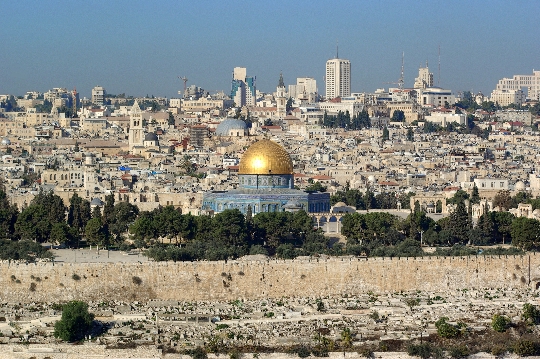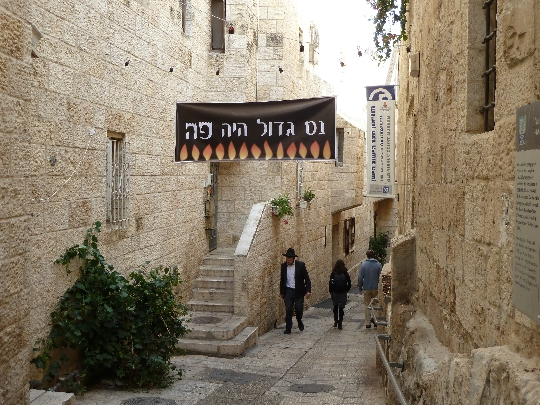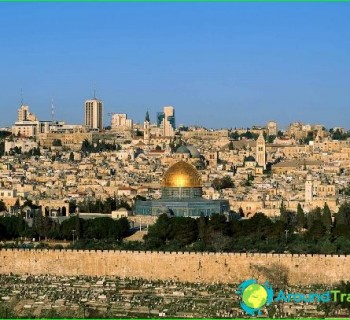Areas of Jerusalem

The areas of Jerusalem vary greatly, so when planning a trip to the capital of Israel, you should learn more about their features..
Names and descriptions of neighborhoods in Jerusalem
- Pisgat Zeev: the main attractions of the area are the grove “Peace Forest” (it is a place where acacias, eucalyptus trees, casuarinas and porcupines, partridges, foxes, gazelles live; once in this forest, travelers can take photos of quarries, burial caves, wineries) davilen), the palace of King Hussein (is an unfinished summer palace).
- Musrara: Popular for the College of Art and the annual Contemporary Art Festival.
- Russian courtyard: tourists are recommended to go to inspect the Holy Trinity Cathedral (it is a reflection of the neo-Byzantine style; there are icons of Nicholas the Wonderworker and the Annunciation of the Most Holy Theotokos).
- Ein-Karem: sheltered the Gornensky monastery on its territory (on April 12, a holiday is celebrated here “Kissing mariino”, on the eve of which the icon of the Annunciation of the Most Holy Theotokos is brought to the monastery) and the Church of the Visitation (in the decoration of the cloister walls, bas-reliefs with the texts of the Magnificat are used; here you can admire Vagerini's frescoes, the plot of which is dedicated to the Virgin Mary).
- Givat Ram: of interest is the National Library (its fund houses 5 million books written in Hebrew and Judaica) and the Israel Museum (it is a repository of 500,000 exhibits; for example, in the Temple of the Book you will be able to admire medieval and biblical manuscripts, and in the Garden of Arts - exhibits of sculptural creativity).
- Old City: taking a map with you, you can go to explore important objects of the area - the Temple Mount with the Al-Aqsa mosques (the building consists of 7 galleries) and the Dome of the Rock (to visit you should put on closed clothes and take off your shoes at the entrance; on Muslim holidays and Friday-Saturday, non-Muslims are not allowed here), the Church of the Holy Sepulcher (here is the place of the crucifixion of Christ; the ceremony of the descent of the Holy Fire is associated with the temple - it is a symbol of the resurrection of Christ), the Wailing Wall (on excursions through the tunnels of the wall, you can learn its history and see on its part; if you wish, you can visit the nearby cognitive center “Purpose of generations” with an exposition that tells about the history of the Jewish people), Via Dolorosa (there are stops on the Way of the Cross of Christ).
Where to stay for tourists
So that the road to the iconic places of the city does not turn out to be long and tiring (those who decide to get to them by public transport should know that Saturday and Friday evening are weekends when transport does not run around the city), tourists are better off staying in hotels in the Old Town (the safest for placement are the Armenian, Christian and Jewish quarters). As a rule, accommodation in this area is cheaper for tourists compared to accommodation facilities even on the outskirts - this is due to the cramped conditions, lack of greenery, and the presence of streets in the form of intricate labyrinths..
And outside the Old Town you can find good hotels, which are awarded 4-5 stars..




